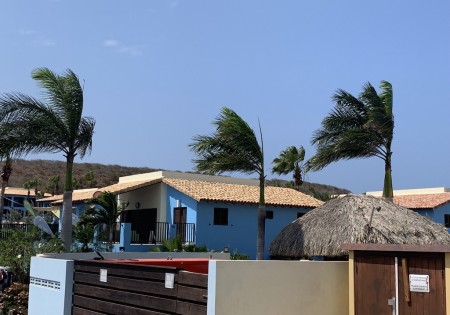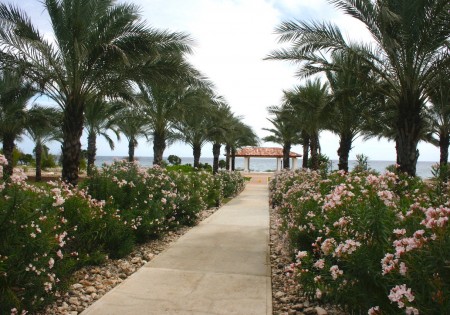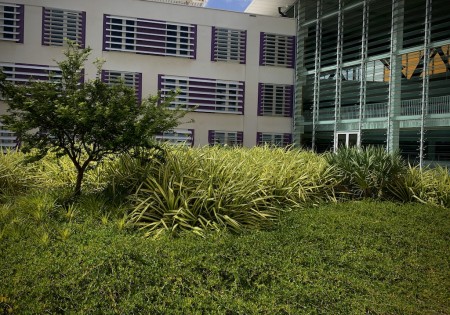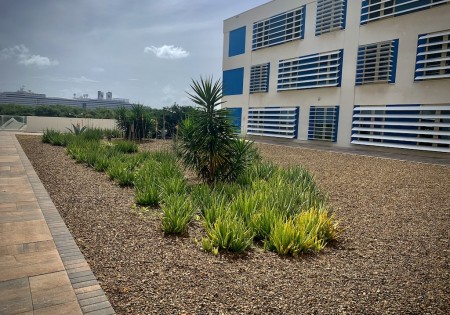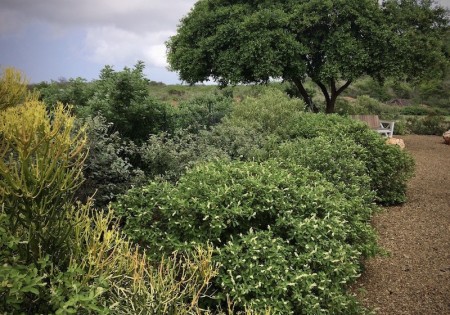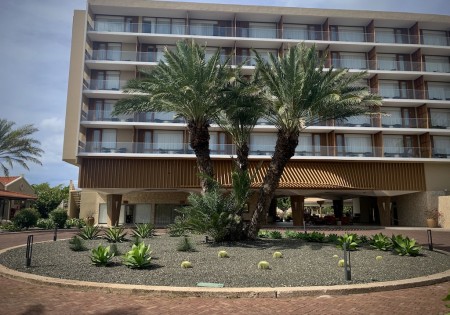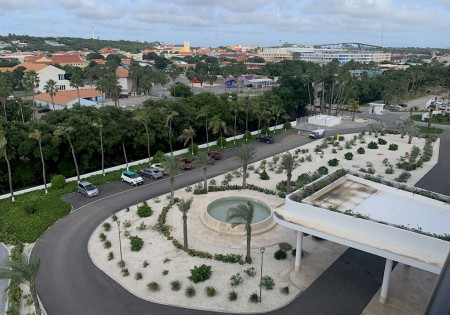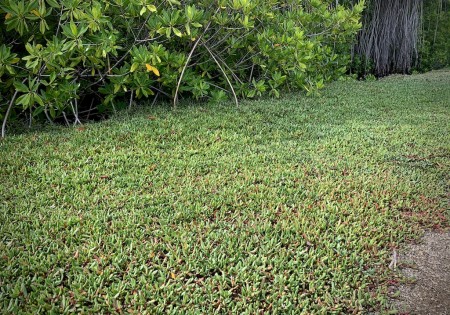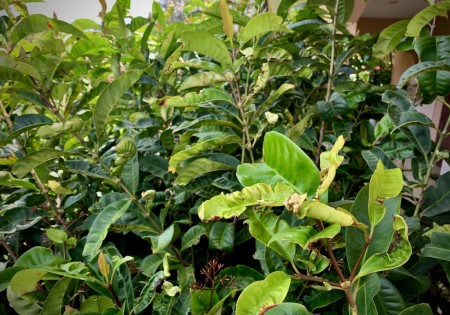
GARDEN INSTRUCTIONS
Landscaping in Curaçao
In this chapter we provide some information that you can (should) take into account when laying out your garden. As elsewhere in the world, the climate plays an important role in the design of the garden. In addition, it is very important to know with what type of water you are going to irrigate the plants, because without water it is not possible to create a garden on Curaçao. Even a cactus garden will need to be irrigated in the first few months.
OUR CLIMATE
Curaçao has a semi-arid (almost desert) climate, with an annual average rainfall of 550 mm. Most (60%) of this falls in the rainy season; October to January. The strong North East Trade winds are a problem for many plants. Often wind damage occurs to the leaves and trees skew. Even though Curaçao is located between the tropics and therefore in the area on earth that is called the 'tropics', it does not have the tropical rainforest climate, as in countries such as Suriname, Colombia, Costa Rica, Indonesia, Thailand etc. Plants from those regions have it is very difficult in our climate, especially when they face the wind.
The average maximum temperature is 31.0º C. and the average minimum temperature is 25.3º C. The difference between day and night temperatures is therefore very limited. Some plant species (from the sub-tropics, for example), therefore do not or hardly flower.
The sun is perpendicularly above us twice a year, resulting in very high temperatures in the month of September
WATER
To irrigate the plants, use can be made of:
Mains water (very expensive and a much too high pH)
Collected rainwater (best water, but the cistern does not last long ) Septic tank
water (very dirty and full of bacteria, smelly very)
Well water
Purified sewage water, is used at some hotels
Well water is most commonly used. The water is usually good for use in gardens. The quality differs from district to district. It is certain that the water is always calcareous. The pH (acidity) is between 7.5 and 8.5. Many plant species cannot withstand the calcareous water, if it ends up on the leaves via sprinklers (for lawns). This spray water makes the leaves, but also eg clinkers, walls and windows, turn white (from the lime).
The high pH of the water is responsible for the yellow leaves in plant species such as Ixora and Heliconia. In addition, the lime in the water clogs the drippers of the irrigation system. These must therefore be replaced or cleaned regularly.
Due to the many wells that have been dug over the years, wells in certain areas on the island are drying up! There goes your beautiful 'tropical' garden, which consumes many m3 every day.
'Xeriscape Gardening'
It seems logical that you should have your garden designed with the above in mind. A garden that fits the climate of Curaçao and requires little water: 'Xeriscape gardening' is called in the dry States in the United States. So no lawns, Heliconias, Alpinias, etc., but Trinitaria (Bougainvillea), French Flower (Nerium olenader), Frangipani (Plumeria), Texas Sage (Leucophyllum) etc. It is even more ideal to use native trees and shrubs, such as Palu Brasil, Kalabas, Dividivi, Watakeli, Basora Kora, Basora Pretu, etc.
Water conservation is the idea behind 'Xeroscape Gardening', in addition to the use of greenery, which suits our climate well. This is how you should in Suriname (tropical rainforest climate with about 2.
GARDEN DESIGN
When designing the garden, we naturally take the wishes of the customer into account. We do recommend doing or not doing some things, taking into account, for example, the wind direction. Drawings are made to scale. We don't make 3-D presentations: we have been making gardens for 30 years!
The design is discussed with the customer and adjusted if necessary. The resulting offer includes the irrigation system, soil, fertilizer, possibly gravel, the plants, labor and use of machines.
GARDEN MAINTENANCE
OUR PROJECTS

